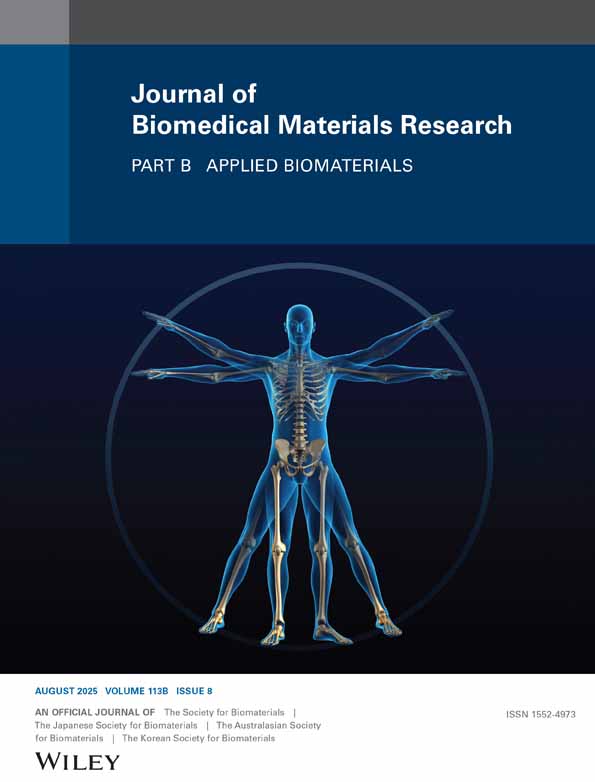PMMA-hydroxyapatite composite material retards fatigue failure of augmented bone compared to augmentation with plain PMMA: In vivo study using a sheep model
Funding for this research was provided by aap Biomaterials.
Abstract
Polymethylmethacrylate (PMMA) is the most commonly used void filler for augmentation of osteoporotic vertebral fracture, but the differing mechanical features of PMMA and osteoporotic bone result in overload and failure of adjacent bone. The aim of this study was to compare fatigue failure of bone after augmentation with PMMA-nanocrystalline hydroxyapatite (HA) composite material or with plain PMMA in a sheep model. After characterization of the mechanical properties of a composite material consisting of PMMA and defined amounts (10, 20, and 30% volume fraction) of HA, the composite material with 30% volume fraction HA was implanted in one distal femur of sheep; plain PMMA was implanted in the other femur. Native non-augmented bone served as control. Three and 6 months after implantation, the augmented bone samples were exposed to cyclic loading and the evolution of damage was investigated. The fatigue life was highest for the ovine native bone and lowest for bone-PMMA specimens. Bone-composite specimens showed significantly higher fatigue life than the respective bone-PMMA specimens in both 3- and 6-month follow-up groups. These results suggest that modification of mechanical properties of PMMA by addition of HA to approximate those of cancellous bone retards fatigue failure of the surrounding bone compared to augmented bone with plain PMMA. © 2014 Wiley Periodicals, Inc. J Biomed Mater Res Part B, 102B: 1613–1619, 2014.




